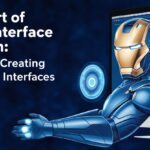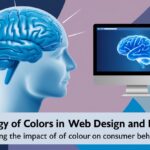
Web design is an essential aspect of creating a website. It is the process of planning, conceptualising, and arranging content that appears on a website. Web design involves several elements, such as layout, colours, graphics, fonts, and content. The main objective of web design is to create an aesthetically pleasing and user-friendly website that provides an excellent user experience.
Web design is a crucial factor in attracting and retaining visitors to a website. An effective web design can help businesses establish their online presence and build credibility among their target audience. A well-designed website can also help businesses achieve their marketing goals by increasing brand awareness, generating leads, and driving sales. With the increasing number of businesses going online, web design has become an essential skill for web developers and designers alike.
Understanding Web Design
Web design is the process of creating the visual and functional elements of a website. It involves the planning, creation, and maintenance of a website. The primary goal of web design is to create a website that is both aesthetically pleasing and user-friendly.
Role of a Web Designer
The role of a web designer is to create a website that meets the needs of the client and the end-users. The web designer is responsible for the visual design of the website, including the layout, colour scheme, typography, and imagery. They also ensure that the website is easy to navigate and that the content is presented in a clear and concise manner.
Web designers use a variety of tools and technologies to create websites, including HTML, CSS, JavaScript, and various design software. They must also have an understanding of user experience (UX) design and search engine optimisation (SEO) to create a website that not only looks great but also performs well.
Web Design Vs Web Development
Web design and web development are often used interchangeably, but they are two distinct disciplines. Web design is focused on the visual and functional elements of a website, while web development is focused on the technical aspects of a website, including coding and programming.
Web designers work closely with web developers to ensure that the website is both visually appealing and technically sound. While web designers focus on the design and layout of the website, web developers are responsible for coding and programming the website to ensure that it functions properly.
In summary, web design is an essential aspect of creating a website that is both visually appealing and user-friendly. The role of a web designer is to create a website that meets the needs of the client and the end-users, while working closely with web developers to ensure that the website is both visually appealing and technically sound.
Core Elements of Web Design
Web design is the process of creating websites that are visually appealing, user-friendly, and functional. There are several core elements of web design that are crucial for creating an effective website. These elements include text and typography, colour and background, layout and structure, images and multimedia, and buttons and links.

Text and Typography
Text and typography are essential elements of web design that can have a significant impact on the overall look and feel of a website. The font, size, and colour of text can affect readability and user engagement. Choosing the right typography can help convey the tone and personality of a website and can create a strong visual hierarchy.
Colour and Background
Colour and background are important design elements that can be used to create a visually appealing website. The colour scheme of a website can affect the mood and emotions of users and can help create a cohesive and unified design. Background images and patterns can add depth and texture to a website and can be used to create visual interest.
Layout and Structure
Layout and structure are critical elements of web design that can affect the usability and functionality of a website. The layout of a website should be intuitive and easy to navigate, with a clear hierarchy of information. A well-structured website can help users find what they are looking for quickly and efficiently.
Images and Multimedia
Images and multimedia are essential elements of web design that can help create a visually engaging and interactive website. High-quality images and videos can help tell a story and convey information in a more compelling way than text alone. Multimedia elements can also help create a more immersive user experience.
Buttons and Links
Buttons and links are critical elements of web design that can affect the usability and functionality of a website. Buttons should be easy to find and use, with clear calls to action. Links should be clearly labelled and easy to click, with a consistent design throughout the website.
In conclusion, web design is a complex process that involves many different elements. By focusing on the core elements of web design, designers can create websites that are visually appealing, user-friendly, and functional.
Technical Aspects of Web Design
Web design is an intricate process that involves various technical aspects. In this section, we will discuss some of the fundamental technical aspects of web design.
Coding Fundamentals
Coding is the process of creating a website using programming languages such as HTML, CSS, and JavaScript. HTML is used to create the structure of a website, while CSS is used to style it. JavaScript is used to add interactivity to the website. A good web designer should have a strong understanding of coding fundamentals to create a website that is both functional and visually appealing.
Responsive Design
In today’s digital age, it is essential to design websites that are responsive. Responsive design means that the website will adjust to fit the screen size of the device it is being viewed on. This is important as more people are using mobile devices to access the internet. A responsive website will ensure that the user has a good experience regardless of the device they are using.
Website Builders
Website builders are tools that allow users to create websites without having to write code. These tools are popular as they are easy to use and require no technical knowledge. Some popular website builders include Wix, Squarespace, and Weebly.
Web Design Tools
Web design tools are software programs that help web designers create and design websites. Some popular web design tools include Figma, Photoshop, and Sketch. These tools allow designers to create wireframes, prototypes, and design mockups.
In conclusion, a good web designer should have a strong understanding of coding fundamentals, responsive design, website builders, and web design tools. These technical aspects are crucial in creating a website that is both functional and visually appealing.
Principles of User Experience
Web design is not just about creating visually appealing websites. It is also about creating user-friendly and functional websites that provide a positive user experience. The principles of user experience (UX) are essential in achieving this goal.
Usability and Functionality
Usability and functionality are key principles of user experience design. A website should be easy to use and navigate, with clear and concise instructions. Users should be able to find what they are looking for quickly and efficiently. A website should also be functional, with all links and buttons working correctly.
Information Architecture
Information architecture is another important principle of user experience design. It involves organizing and structuring content in a way that is easy to understand and navigate. A clear and logical information architecture helps users find the information they need quickly and efficiently. This can be achieved through the use of menus, breadcrumbs, and search functionality.
User Research and Personas
User research and personas are essential in creating a user-focused website. User research involves gathering information about the target audience, including their needs, preferences, and behaviours. Personas are fictional characters that represent different user types. By creating personas, designers can better understand the needs and behaviours of their target audience, and design a website that meets their needs.
In conclusion, the principles of user experience are essential in creating a website that is user-friendly, functional, and provides a positive user experience. By focusing on usability and functionality, information architecture, and user research and personas, designers can create websites that meet the needs of their target audience.
Visual Design in Web Design
Visual design is a crucial aspect of web design. It involves creating a visual hierarchy, balance, and harmony to attract and retain the user’s attention. Visual design also encompasses the use of negative space, composition, animation, and interactivity to enhance the user experience.

Balance and Hierarchy
Balance and hierarchy are essential design principles in visual design. Balance refers to the distribution of visual elements on a web page to create a sense of equilibrium. It can be symmetrical or asymmetrical, depending on the design goals. Symmetrical balance involves the use of identical visual elements on both sides of a web page, while asymmetrical balance involves the use of different elements on either side of the page. Hierarchy, on the other hand, refers to the arrangement of visual elements in order of importance. It helps users to navigate a web page easily and find the information they need quickly.
Negative Space and Composition
Negative space refers to the empty spaces between visual elements on a web page. It is also called white space, even if it is not white. Negative space helps to create a sense of balance and harmony on a web page, and it can be used to draw attention to specific elements. Composition, on the other hand, refers to the arrangement of visual elements on a web page to create a cohesive design. It involves the use of grids, columns, and other layout techniques to organize visual elements on a web page.
Animation and Interactivity
Animation and interactivity are essential aspects of visual design in web design. Animation refers to the use of moving visual elements on a web page to create a sense of dynamism and engagement. It can be used to draw attention to specific elements or to provide feedback to users. Interactivity, on the other hand, refers to the use of user input to control visual elements on a web page. It can be used to create engaging user experiences and to provide feedback to users.
In conclusion, visual design is a crucial aspect of web design. It involves creating a visual hierarchy, balance, and harmony to attract and retain the user’s attention. Visual design also encompasses the use of negative space, composition, animation, and interactivity to enhance the user experience. By following these design principles, web designers can create visually appealing and engaging web pages that provide users with a positive experience.
Web Design for Business
Web design plays a crucial role in the success of any business website. It is the first impression that a visitor gets when they land on your website. In today’s digital age, it is essential for businesses to have a website that is visually appealing, user-friendly, and optimized for search engines. In this section, we will explore the importance of web design for businesses and how it can impact brand and product representation, SEO and web traffic, and conversion rate optimization.
Brand and Product Representation
Web design can help businesses to represent their brand and products in a visually appealing and professional manner. A well-designed website can convey the message and values of a brand effectively. By using the right colour schemes, typography, and imagery, businesses can create a unique and memorable brand identity that resonates with their target audience.
SEO and Web Traffic
Search engine optimisation (SEO) is the process of optimizing a website to rank higher in search engine results pages (SERPs). A well-designed website can help businesses to improve their SEO and attract more web traffic. By using clean code, responsive design, and optimized images, businesses can improve the loading speed of their website, which is a crucial factor in SEO. Additionally, a website with a clear and logical structure can help search engines to crawl and index the site more efficiently.
Conversion Rate Optimization
Conversion rate optimization (CRO) is the process of improving the percentage of visitors who take a desired action on a website. A well-designed website can help businesses to improve their conversion rates by providing a seamless user experience. By using clear calls to action, easy-to-use forms, and a logical navigation structure, businesses can guide visitors towards their desired action, such as making a purchase or filling out a contact form.
In conclusion, web design is an essential aspect of any business website. It can impact brand and product representation, SEO and web traffic, and conversion rate optimization. By investing in a well-designed website, businesses can improve their online presence and attract more customers.
Best Practices in Web Design
When it comes to web design, there are certain best practices that designers should follow to ensure that their websites are effective and user-friendly. In this section, we will discuss some of the most important best practices in web design.
Designing for Target Audience
One of the most important aspects of web design is designing for the target audience. A website that is designed with the target audience in mind will be more effective in communicating the intended message and achieving the desired goals. Designers should consider factors such as age, gender, location, interests, and browsing habits when designing a website.
Mobile App Design
With the increasing use of mobile devices, it is essential that websites are designed with mobile users in mind. Mobile app design should be responsive, meaning that the website should be able to adjust to the screen size of the device it is being viewed on. Designers should also consider the limitations of mobile devices such as smaller screens and slower internet speeds when designing a website for mobile users.
Content Management Systems
A content management system (CMS) is a software application that allows users to create, manage, and publish digital content. CMSs are used to manage website content, including text, images, and videos. When designing a website, it is important to choose a CMS that is easy to use and maintain. The CMS should also be able to handle the needs of the website, including the ability to add new pages, update content, and manage user accounts.
Overall, following these best practices in web design can help ensure that a website is effective, user-friendly, and achieves its intended goals.
Future of Web Design
Web design is an ever-evolving field that is continuously adapting to new technologies and user needs. As technology advances, the future of web design looks promising and exciting, with new trends and innovations emerging constantly.
Emerging Web Design Trends
One of the emerging trends in web design is the use of responsive design. With the increasing use of mobile devices, websites need to be optimised for different screen sizes. Responsive design ensures that websites look great and function well on any device, whether it’s a desktop computer, laptop, tablet or smartphone.
Another trend that is gaining traction is the use of bold colours and typography. Designers are using bright colours and large typography to create eye-catching websites that grab users’ attention. This trend is particularly popular in the fashion and lifestyle industries, where brands are looking to stand out in a crowded market.
Role of AI in Web Design
Artificial intelligence (AI) is playing an increasingly important role in web design. AI-powered tools are helping designers to automate repetitive tasks, such as resizing images and creating layouts. This allows designers to focus on more creative aspects of web design, such as user experience and interface design.
AI is also being used to personalise the user experience. By analysing user data, AI-powered tools can create customised experiences for each user, based on their preferences and behaviour. This can lead to increased engagement and conversions, as users are more likely to interact with a website that is tailored to their needs.
In conclusion, the future of web design looks bright, with new trends and innovations emerging constantly. Designers who stay up-to-date with the latest technologies and trends will be well-positioned to create websites that are engaging, functional and user-friendly.







6 thoughts on “What is Web Design: A Clear Explanation”